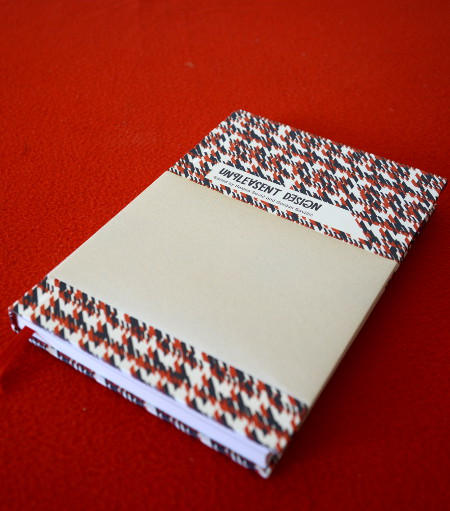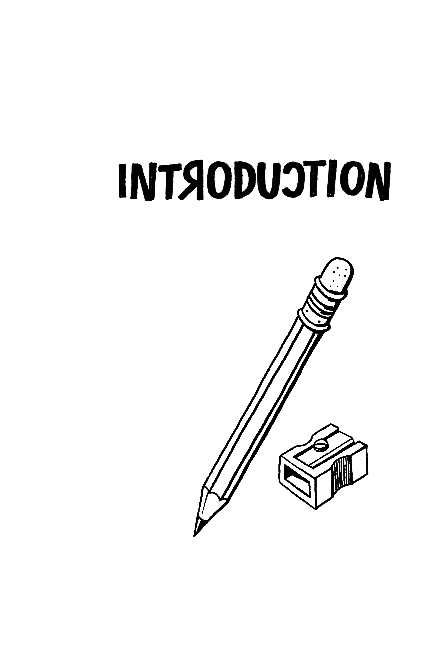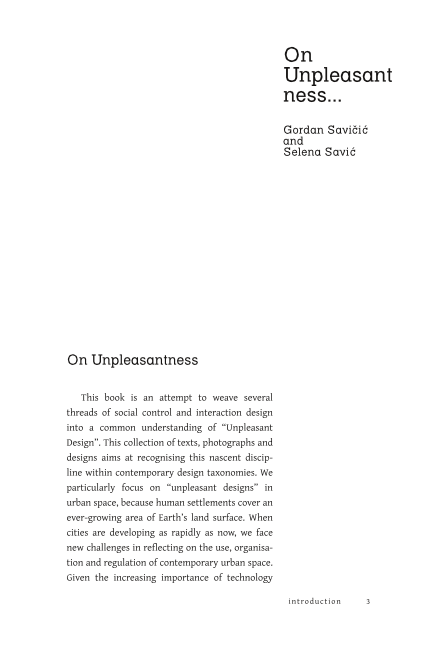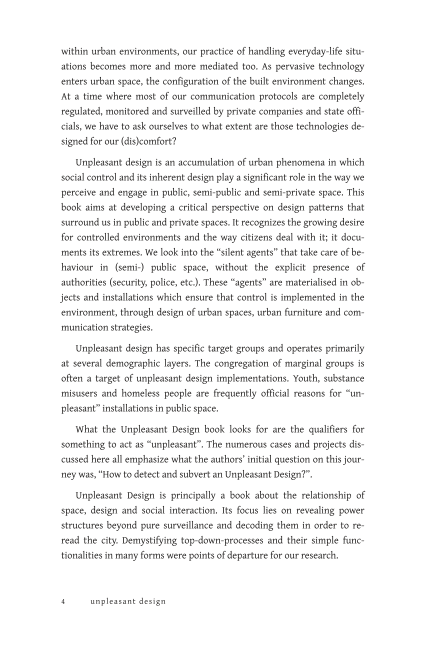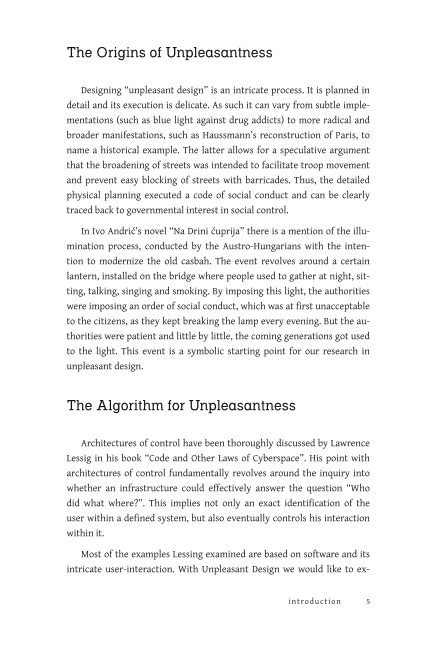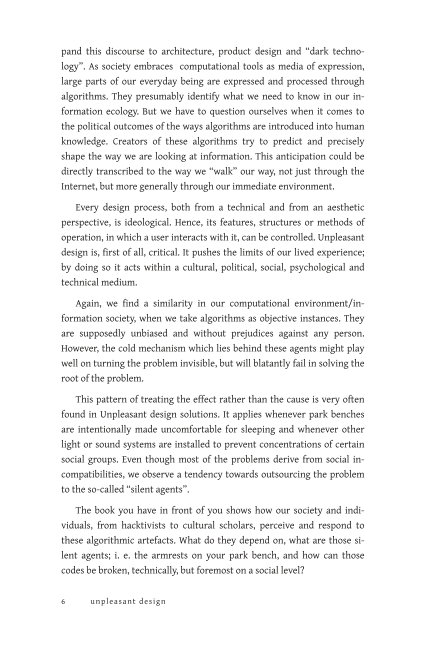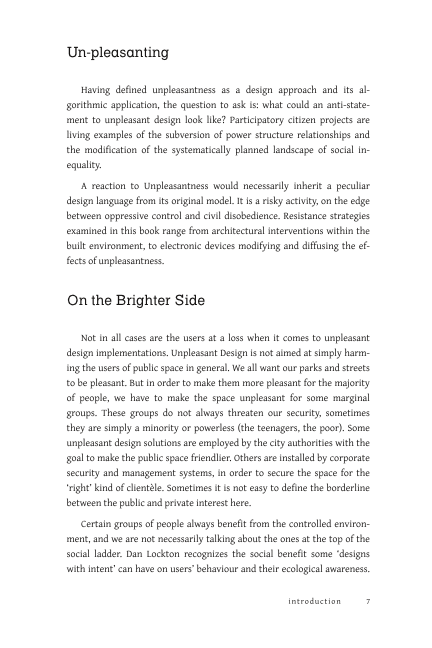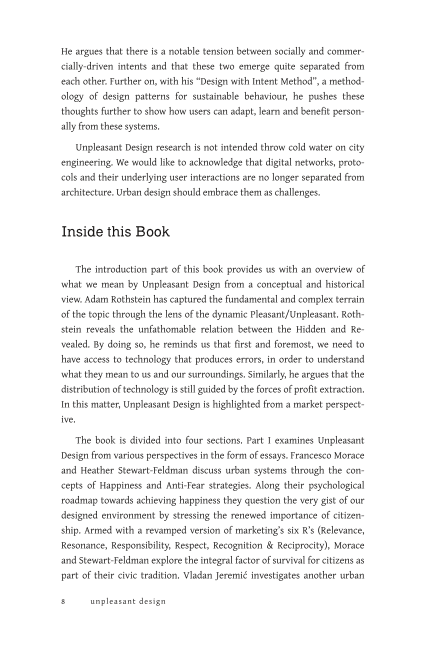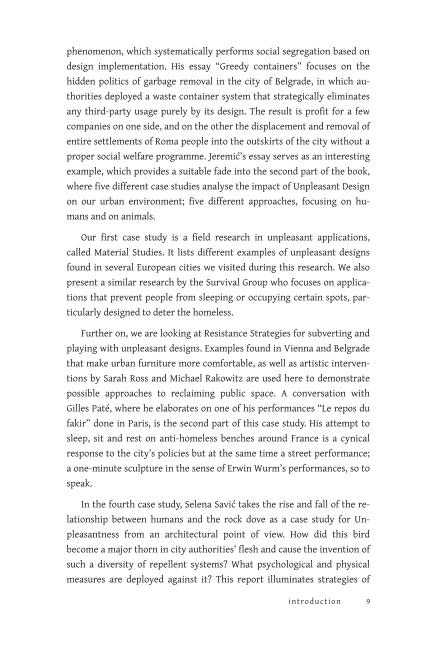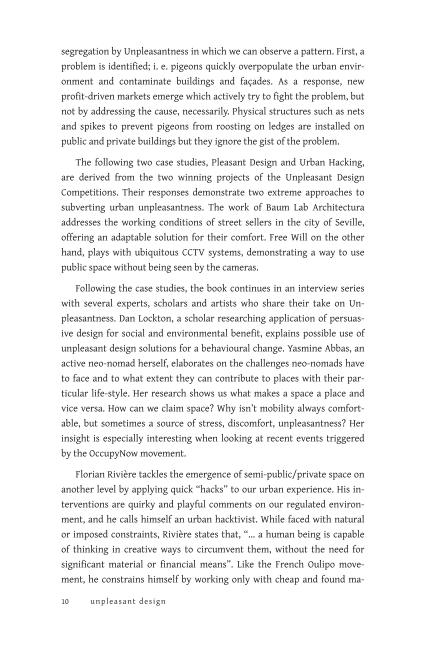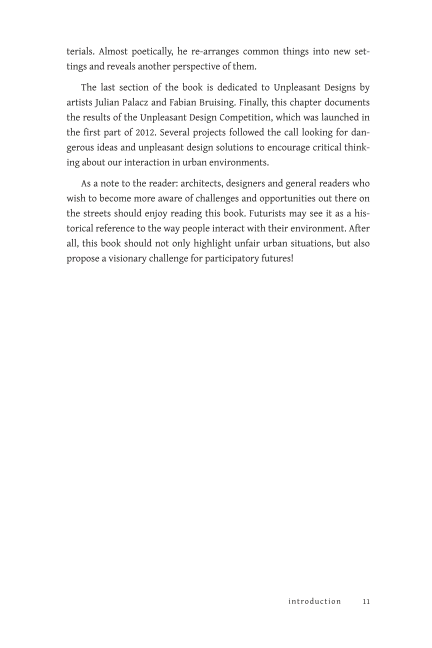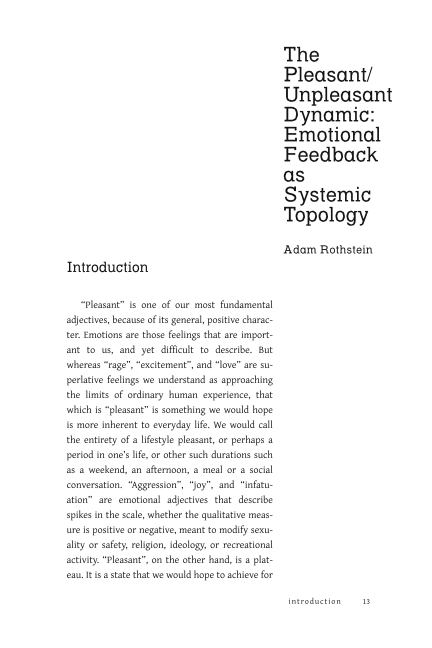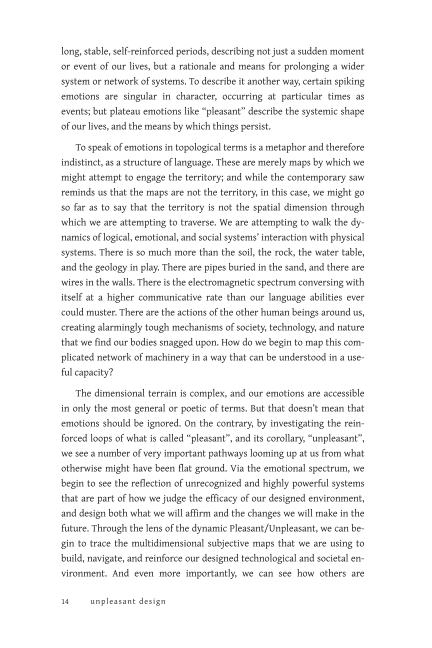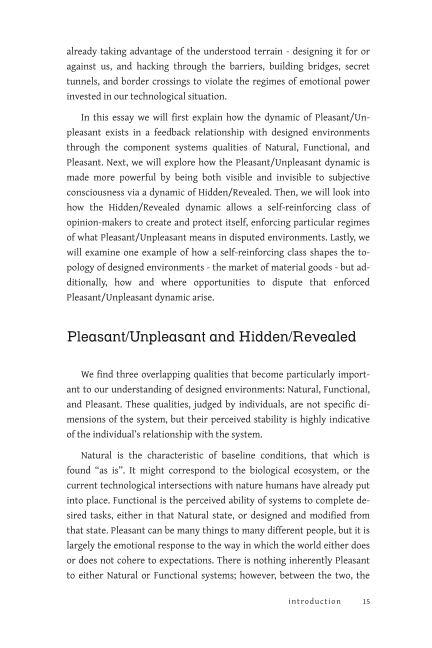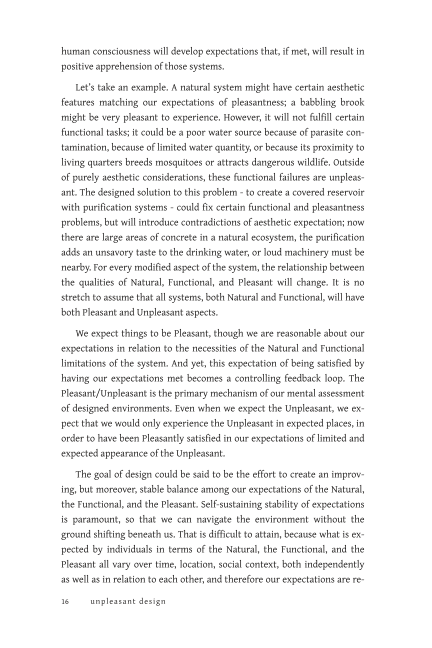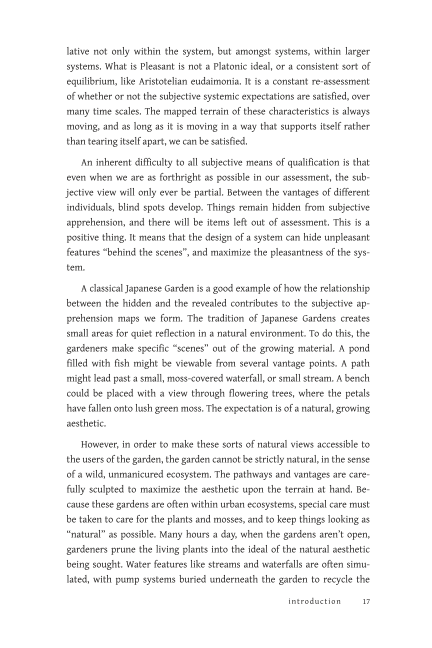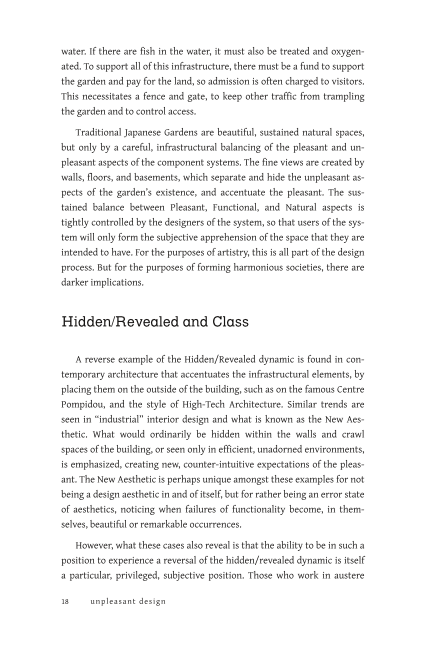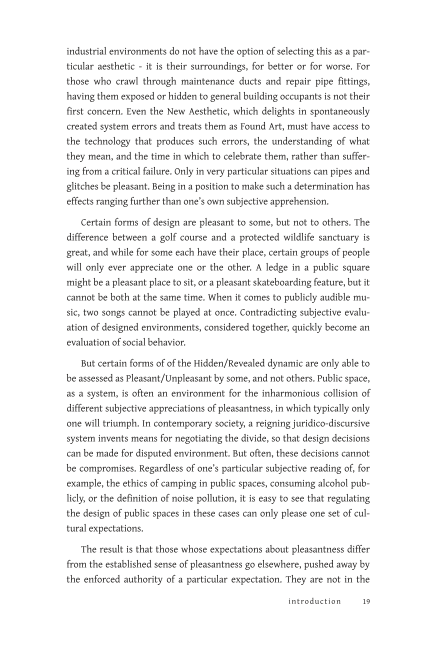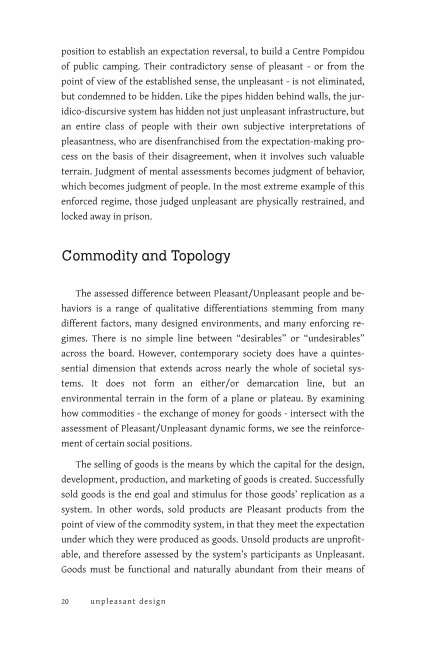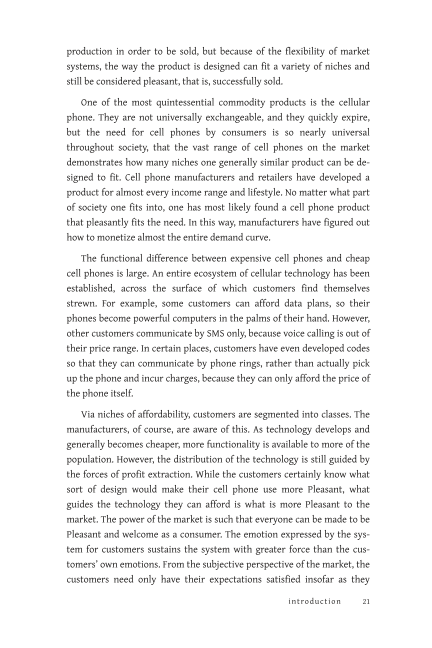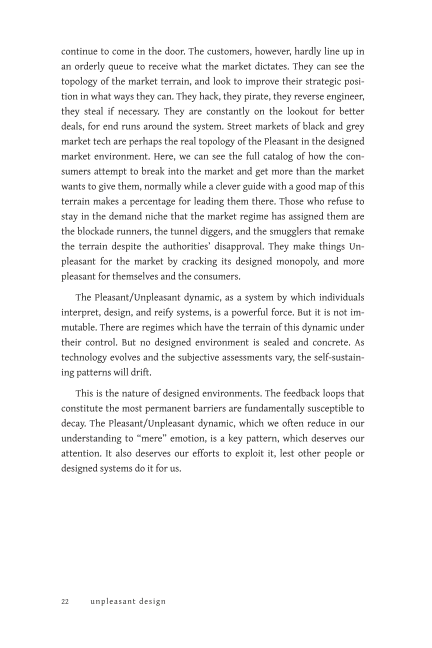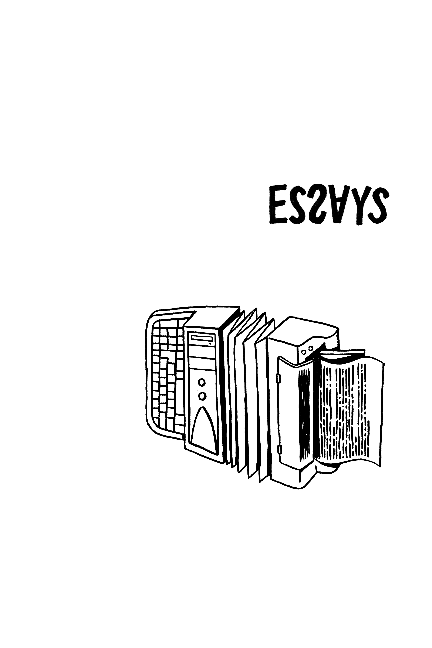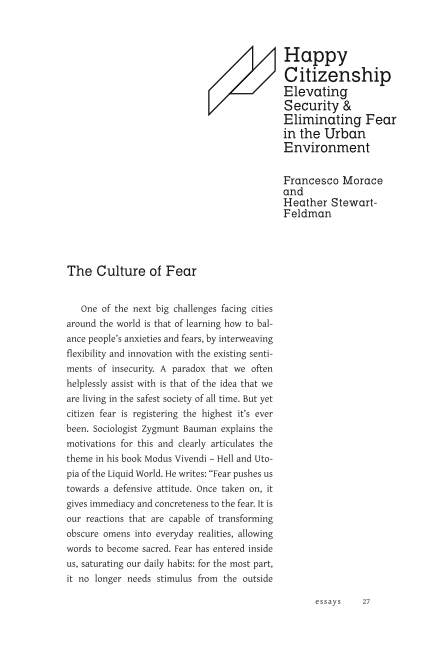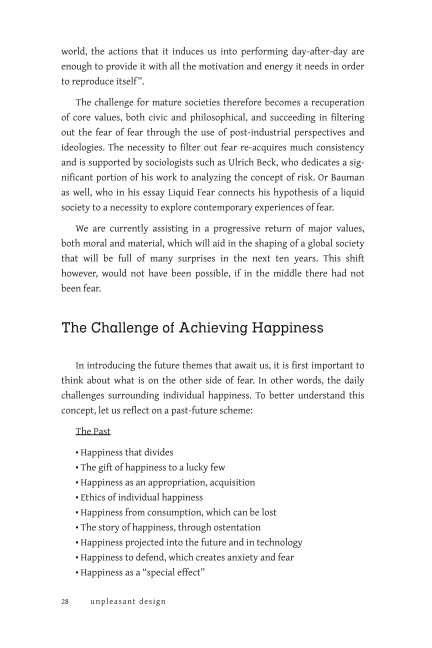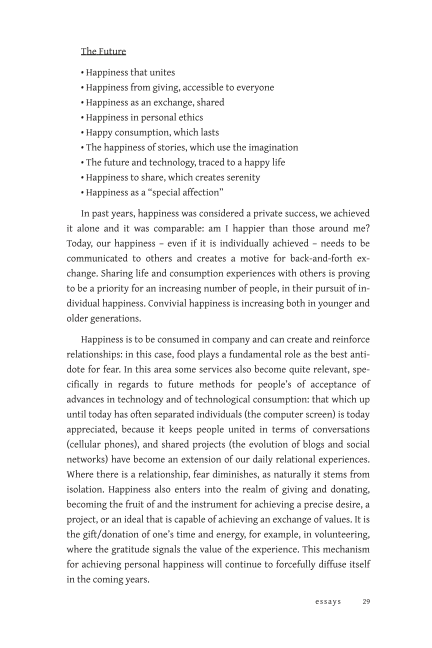From Chindogu to NSA Unpleasant Design workshop given at the Urban Kinghts event gathered some inspiring designers, artists, and theoreticians around the topics of design, exclusion, discrimination and participation in the urban environment. We formed a small think tank to cogitate current trends in urban design and the social control inherent in them.
Having set for our goal a design that will enable only a particular behaviour, we considered Berlin-specific behaviours like bottle collecting, hipsters, walking with babies, drug dealing. We listed different persuasive and coercive design techniques that could target these groups (for example facial recognition software could be used to match criminals but also to distinguish whether somebody is a hipster).
In the light of the multitudinousness of ongoing protests against different forms of oppression, and the pending economic crisis, we decided to focus on businessmen. Our businessman is someone with rather uncomfortable routines, having a strict dess-code, always carrying a briefcase, always after creating profits. Although probably enjoying his income, he is somebody who has very little time for day-to-day joy, and he rarely gets to express his own beliefs. Thus, we decided to work towards enhancing the life of a businessman with a multi-purpose suite which can be worn to regular business meetings, while at the same time serving as a kit for spontaneous, sudden protest. What we came up with is a set of designs that subvert standard businessman’s outfit into an urban protesting kit.

(more…)
We are happy to announce a talk and a workshop within the Urban Knights series of events on urban practices and real-world situations organised by Teresa Dillon.
After a successful experience at the Lift Conference in February 2013, our next design challenge is “Between Chindogu and the NSA”. At the Unpleasant Design workshop, the participants will use persuasive and coercive design techniques to invent a design which targets a specific group, behaviour or product. We will focus particularly on technology enabled discrimination. As pervasive technology enters urban space, the configuration of the built environment will eventually change. The participants will be invited to actively take part in this change.
The workshop will be given by Selena Savic and Nikola Korac.
Workshop: Tuesday, 12 Nov, 11.00 – 16.00 at Weise7.
Places are limited. Cost €20. Book directly weise7.org
Talk: Tue-12 Nov, 19.00-21.00: Free Betahaus, Prinzessinnenstr. 19-20, Berlin
Book the workshop:
http://weise7.org/subscribe/urbanknights
More details on:
http://www.urbanknights.org/when-where/
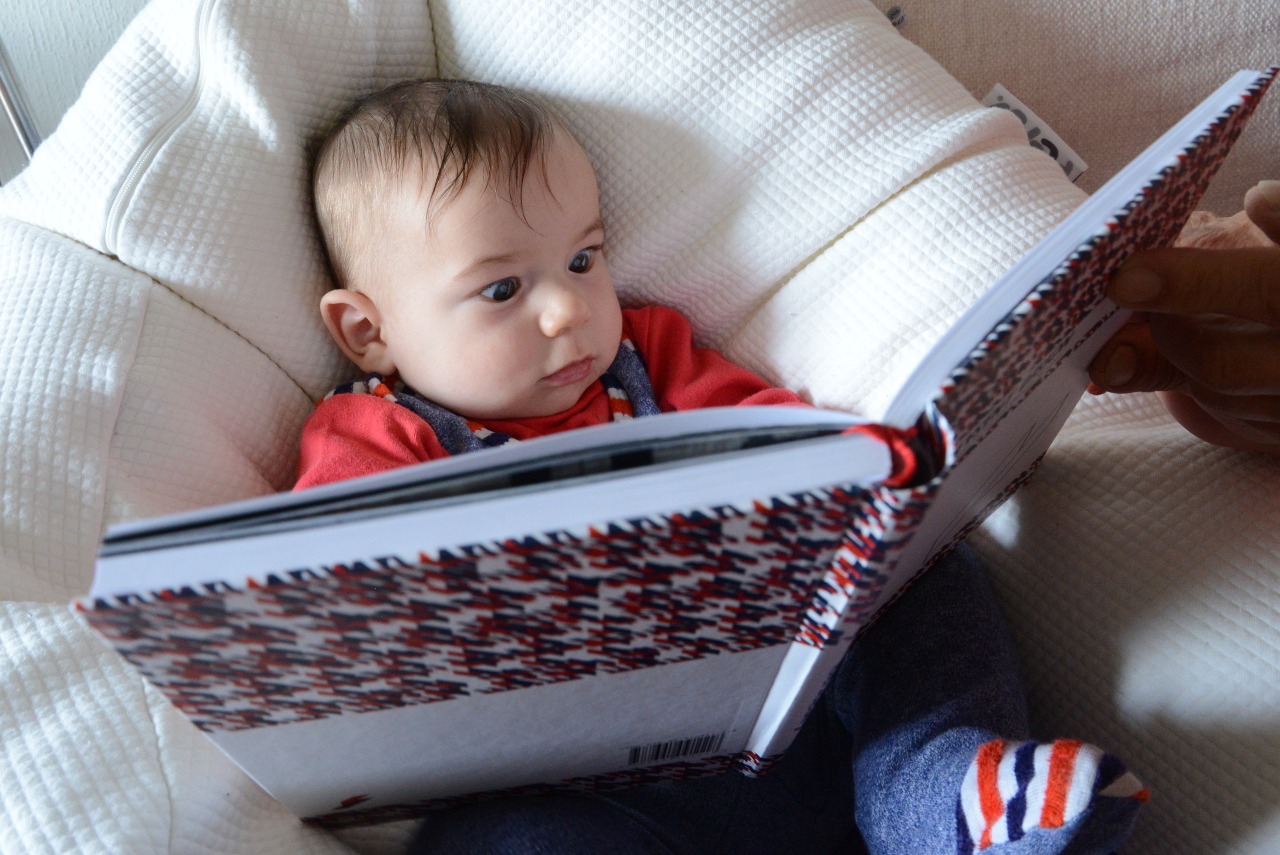
We hosted a sprint-workshop at the Lift conference 13 in Geneva. Around ten participants joined the occasion to develop quick prototypes for unpleasant designs after we had brainstormed through various near-future scenarios.
We asked the participants to think about the “definition” of UNPLEASANT DESIGN, searching for techniques and tactics to be employed when designing “unpleasantness”. We then created a map of possible behaviours and/or social groups to discriminate against, out of which our protoypes were to emerge from. The following two sheets show the results of this thinking process.
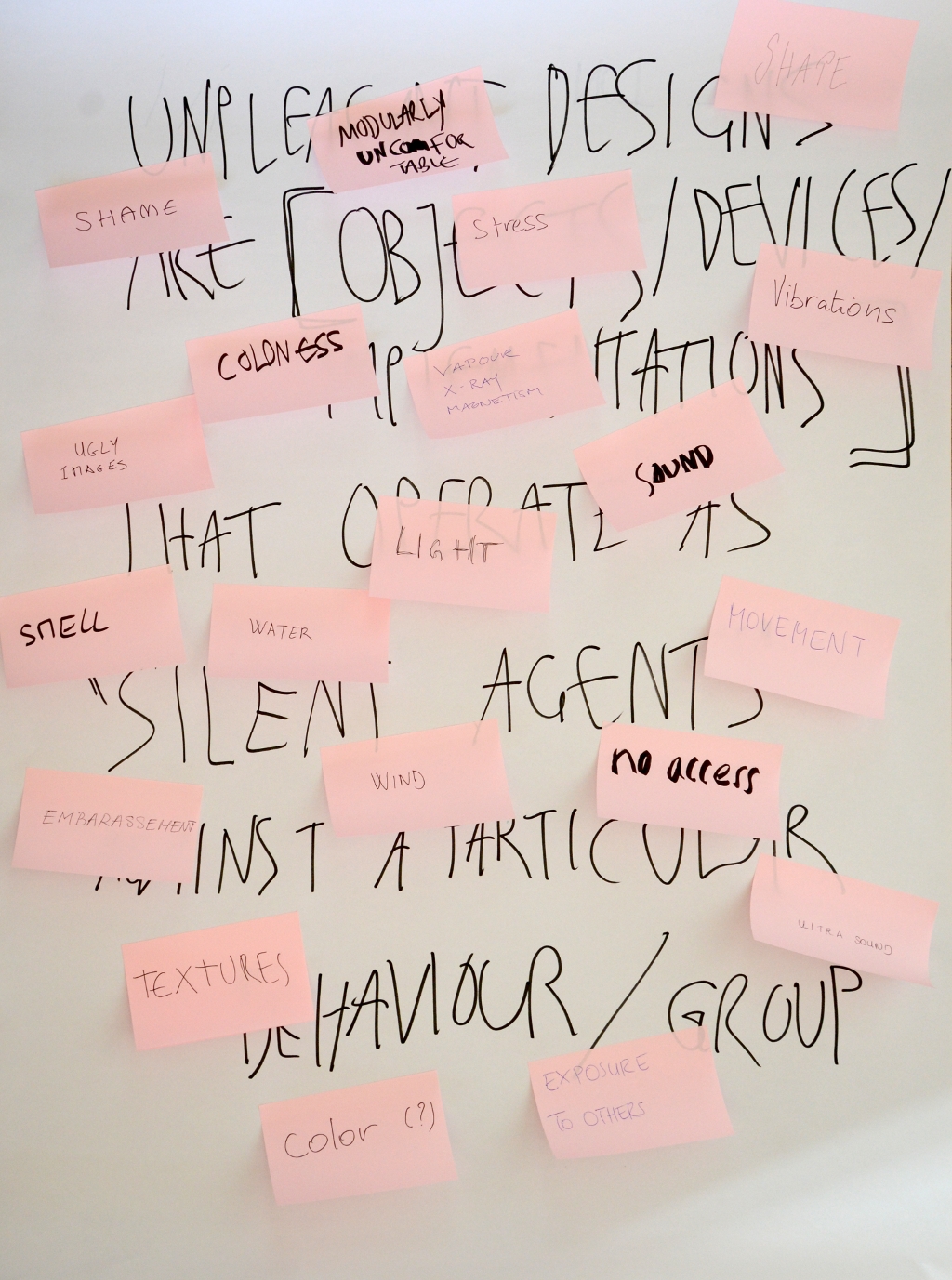 defining unpleasantness: tools, techniques and strategies to be used when designing unpleasantness |
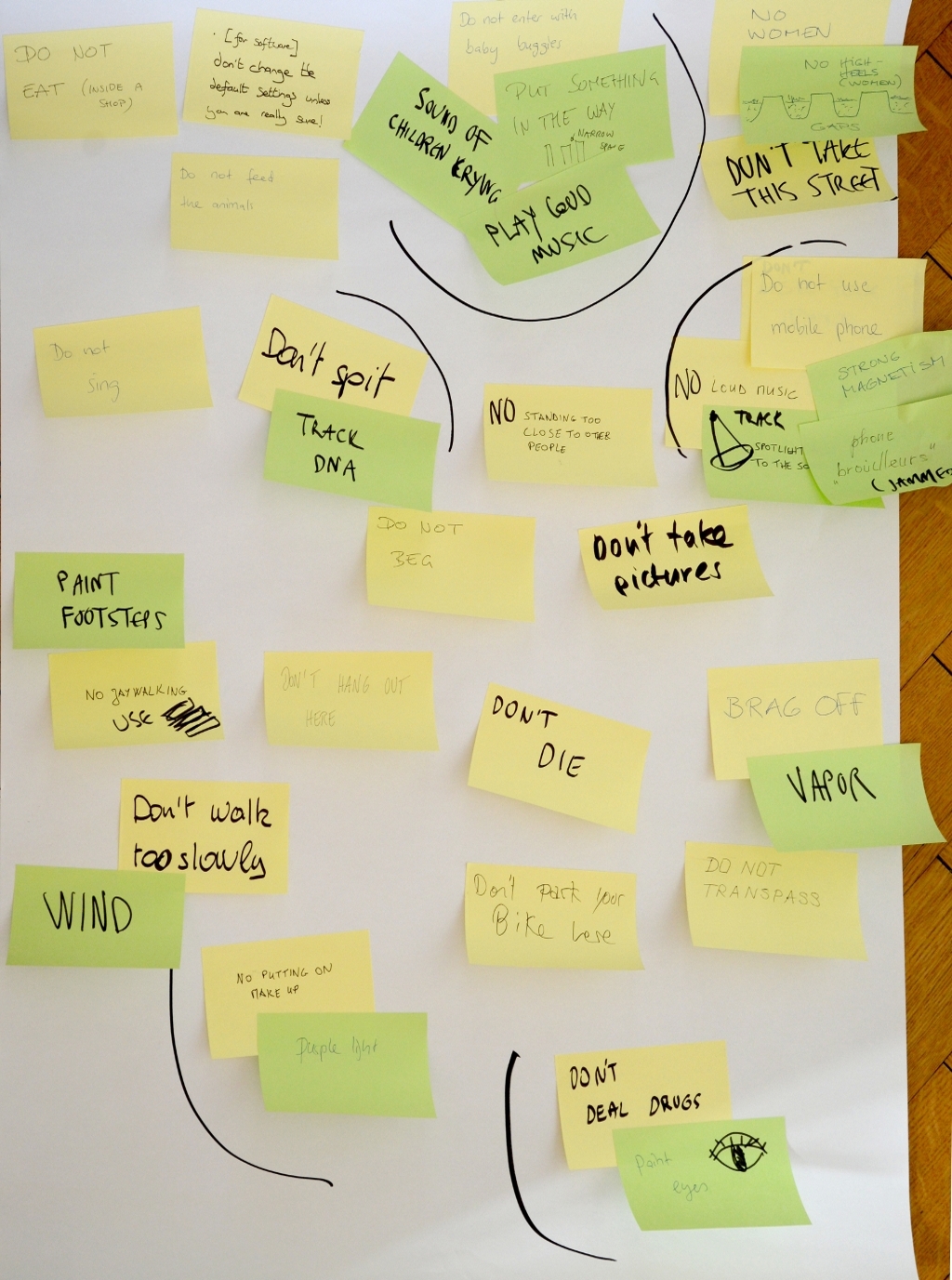 the ‘to forbid list’ – a map of behaviours and social groups unpleasant design could discriminate against |
(more…)
Following the open call for submissions in June this year, we are happy to share the a selection of competition entries we received. See the winning projects here
(more…)
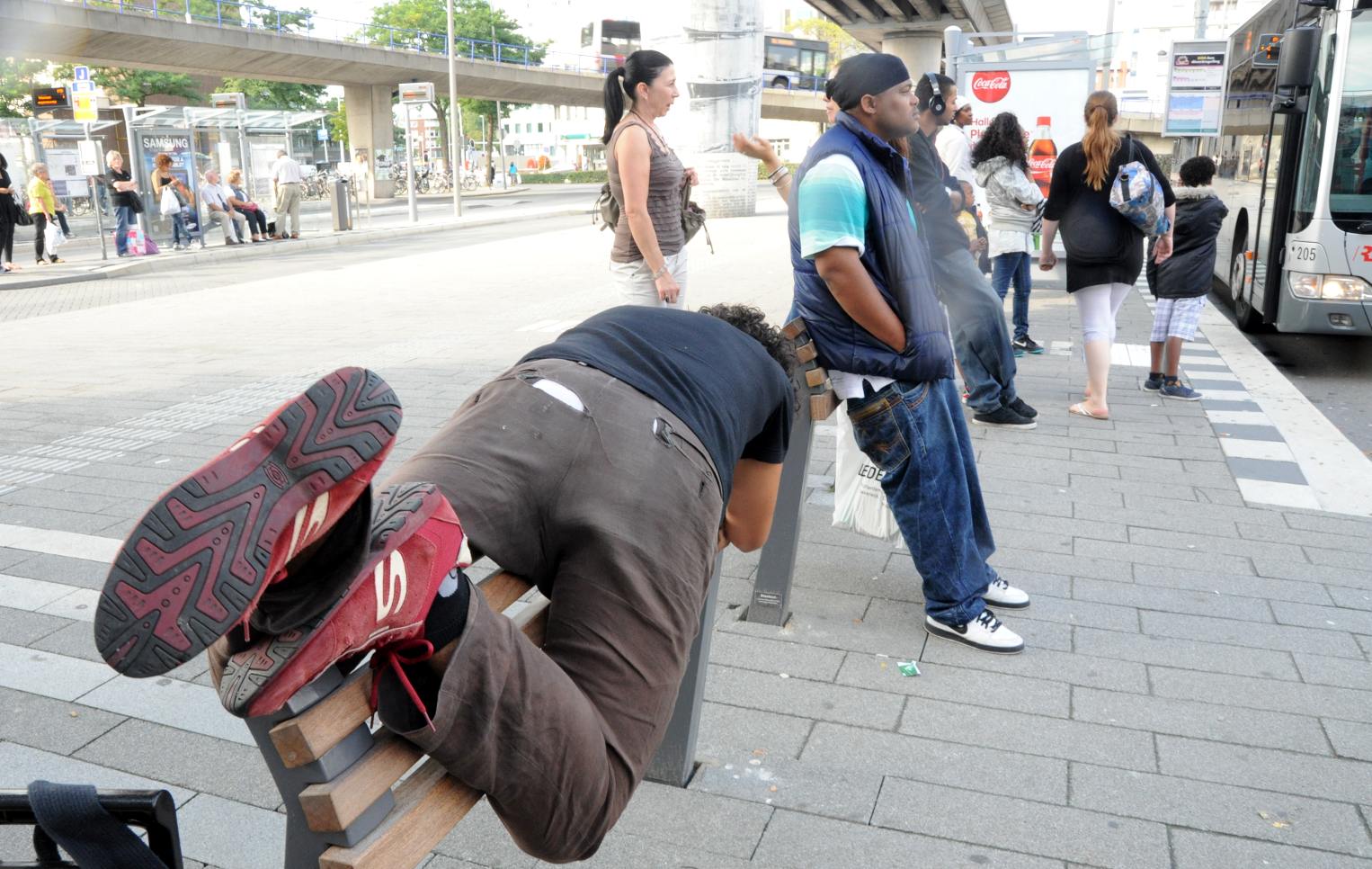
Reenactment of the "Fakir's Rest" at a bus stop on the Zuidplein, Rotterdam; September 2011
dead pixel art
Recently most European cities have been invaded by large scale commercial displays which got shamelessly embedded into buildings and façades. Their main purpose is to illuminate the visual cortex of passers-bys with brands, advertisements and short excitations. During the last decade artists and designers have been encouraged to produce content for those screens to re-appropriate this quasi-private space. Those attempts hardly ever have gotten more exciting than being purely aesthetic and decorative versions of already existing screensavers and visualizations. Other artistic strategies include attacking the gist of those LED walls.
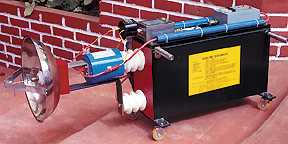
Since most of those media façades consist of a huge multiplexed grid of single controlled LEDs, their control is based on a high-frequency pulse which can be interrupted by emitting a directed high-voltage electromagnetic impulse. By doing so, multiplexed signals get slightly distracted and some dead or glitched pixels will appear. Such a device has been proposed by Martin Kaltenbrunner in June 2011 and we are curious to see various realisations of that device popping up around the globe. I guess a couple of those devices wouldn’t be a miss at Shanghai’s embankment next to the Huangpu river. A similar even though reverse effect has been discovered by moddr_ while using a self-built LED billboard consisting of blank copper wires and an AM radio for generating sound based on the current animation. A self-explaining video of that process/discovery can be found here.

